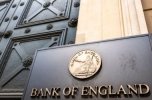- Date
- 10 May 2023
Bank of England to raise interest rates yet again
By Jake Rickman Image credit - William Barton / Shutterstock.com |
What do you need to know this week?
For the 12th time since December 2021, the Bank of England — the UK’s central bank, commonly referred to as the BoE — has announced that it will raise interest rates yet again. This time, increasing the base rate from 4.25% to 4.5%.
The policy purpose behind the rate rises is to counteract inflation, which continues to persist despite suggestions in previous months that it was slowing in the UK and abroad.
Why is this important for your interviews?
Interest rate movements are among the most profound of factors that affect global markets. Understanding why rates rise and fall, and the consequences, is a great way to signal to interviewers the extent of your commercial awareness.
The base interest rate refers to the interest rate that the Bank of England charges other banks to borrow the BoE’s money. For banks to make a profit, they have to loan money at a higher rate than their cost of borrowing. Accordingly, each time the Bank of England raises the base rate, every party down the credit supply line, beginning with commercial banks, raise their own interest rates.
When interest rate hikes began back in 2021, it marked an end to a decade-long stimulus programme that many analysts characterised as an artificial interest rate environment. This refers to the fact that central banks around the world lowered interest rates to near-zero levels following the 2007-08 Global Financial Crisis in an effort to encourage lending and spending and avert an entrenched economic slowdown.
To understand why low interest rates stimulate economies, consider the fact that the vast majority of the commercial world relies on borrowing. Banks borrow money to lend money. Companies borrow money to fund new projects. Private equity firms rely on borrowing to fund leveraged buyouts. (To say nothing of the impact on consumer borrowing).
Interest rates determine the price at which borrowers pay to borrow money. Obviously a £100m loan at 3% interest is far cheaper than a £100m loan at 8%.
It follows that when interest rates are low, it is cheaper for everyone to borrow money. Businesses are more likely to take on loans. Private equity firms are more likely to do leveraged buyouts. In short, the market is more active, which is usually more desirable than an under-active market because under-activity often leads to a recession.
However, a consequence of excess market activity is that the volume of money in circulation increases at an unsustainable rate, which decreases the value of the money. A simple way to conceptualise this is to refer to basic supply/demand principles: the price of anything is determined by the balance of supply and demand.
In the case of interest rates and inflation, low interest rates encouraged borrowers to borrow more money so they could capitalise on the increasing market activity, which requires banks and other lenders to borrow money from each other as well as the central banks, which in turn required central banks to “print’” more money to facilitate additional borrowing. Overtime, this reduces the value of each pound (or dollar, euro, etc) in circulation, as everyone in the market tries to raise the price of their goods and services to stay competitive.
By raising interest rates, central banks are essentially disincentivizing borrowing at a large scale. The idea is that increasing the cost of borrowing makes businesses less likely to undertake the same activities as they would under low interest rate environments. This has a chilling effect, which makes it harder for businesses to raise their prices.

